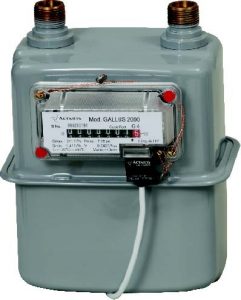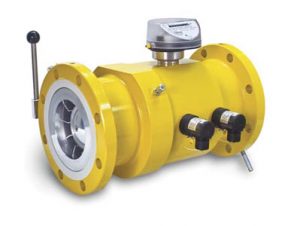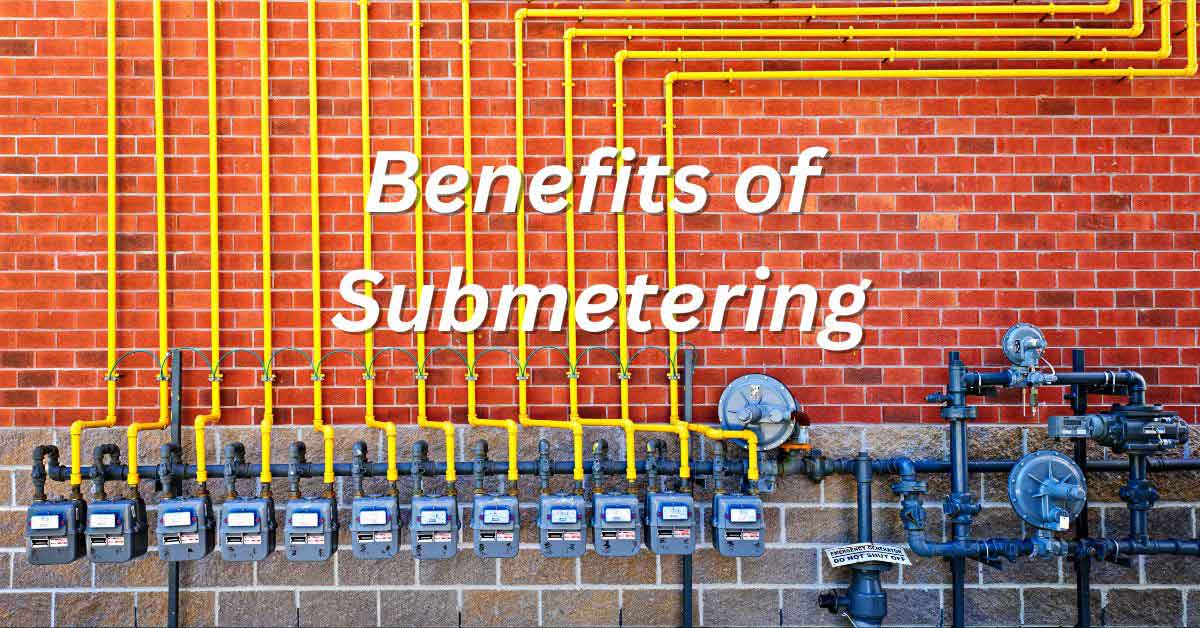8 Benefits of Submetering
Discover the top eight benefits of submetering and learn which four natural gas submeters meet your needs.
What is Submetering?
Utility submetering, a system that enables property owners, landlords, or management firms to bill tenants for their individual measured utility usage, has a rich history. It was first introduced in the 1920s but gained popularity in the late 80s due to rising utility costs and the growing importance of environmental conservation. This historical context underscores the enduring relevance and benefits of submetering in today’s world.
In most situations, the system has a master meter, a primary meter owned by the utility company. This meter measures and bills the responsible property owner or management firm for utility usage. The accountable party places submeters (a/k/a sub-meters) or privately owned meters to determine the individual occupants’ utility usage.
Here are some key points about utility submetering:
- Individual Meters: Submetering involves using individual meters for water, gas, or electricity. These meters track usage for each tenant separately.
- Visibility and Conservation: By fairly billing each tenant based on their actual usage, submetering not only promotes conservation but also offsets expenses related to master meters and maintenance, potentially relieving financial burdens for property owners, landlords, or management firms.
- Legal Compliance: Submetering is legally allowable in most states and municipalities. However, it’s crucial for owners to consult utility management vendors to ensure compliance with local regulations, providing a sense of security and informed decision-making.
Types of Natural Gas Submeters
Different types of gas meters are available to measure natural gas usage in submetering applications. The first three meters are custody transfer meters.
Diaphragm Gas Meters
A diaphragm gas meter for residential and submetering applications is the Itron Metris 250 (formerly by Actaris and Schlumberger) or the Gallus meter. One of the attractions of this meter is its unique modular design, which enables complete customization to fit most installation needs.

Natural Gas Submeter and Appliance Meter | Gallus 2000
- Type: Traditional technology, positive displacement (PD) gas meter, recognized as custody transfer meter
- Function: Measure gas volume by displacing components within the meter
- Accuracy: High accuracy rates
- Accuracy: High accuracy rates (+/- 0.5%)
- Benefits: Reliable, low-cost, and long-lasting
- Turndown Ratio: Offers one of the best turndown ratios in the industry (approximately 80:1)
- Suitable Pressure Range: Works best with low-pressure systems (0-100 PSI) and low flow rates
Rotary Gas Meters:
- Type: Traditional technology, positive displacement (PD) gas meter, recognized as custody transfer meter.
- Function: Measures gas flow through the number of rotations of rotors
- Accuracy: High accuracy rates (+/- 0.5%)
- Pressure Handling: Suitable for higher volumes and pressures (up to approximately 175 PSI)
- Turndown Ratio: Varies between approximately 10:1 to 80:1 depending on the make and application
Turbine Gas Meters:

Honeywell Elster TRZ2 turbine meters are accurate and reliable for measuring gas in gas distribution and transmission, industrial plants, and business operations.
- Type: Traditional technology, velocity meter, custody transfer meter
- Function: Uses a small helix or turbine to determine gas speed
- Measurement Basis: Deduces gas flow volumetrically
- Applications: Commonly used in the chemical and oil industries
- Accuracy: Highly accurate measurements (+/- 0.25%)
- Pressure Handling: Can handle high-pressure systems (up to 2200 PSI)
Thermal Mass Flow Meters
- Type: New gas technology, mass flow meter, or inertial flow meter
- Function: Injects heat into the gas stream and measures how quickly the warmth disperses, which is proportional to the mass flow
- Measurement Basis: Directly measures the gas mass without additional pressure and temperature devices
- Applications: Commonly used in industrial facilities
- Accuracy: Accurate measurements (+/- 1%).
- Turndown Ratio: Low flow sensitivity with wide turndown (100 to 1 turndown with a resolution of 1000 to 1)
8 Benefits of Submetering
Submetering offers many benefits for those managing residential properties, commercial spaces, or industrial facilities. From promoting fair billing and cost allocation to enhancing property value, submetering is a smart investment that can transform your property management or business approach.
- Fair Billing and Cost Allocation—One key advantage of submetering is its ability to ensure fair billing and cost allocation. By accurately measuring individual consumption, submetering enables tenants to pay only for what they use, promoting fairness and transparency. This benefits tenants and property owners, who can recover utility costs more effectively, thereby reducing financial strain.
- Conservation and Awareness—When tenants see their actual usage reflected in their bills, they become more conscious of their consumption. Submetering encourages responsible usage and significantly promotes overall energy and water conservation, making your property more environmentally responsible.
- Incentive for Efficiency—Submetering incentivizes tenants to adopt energy-efficient practices. When they realize their actions directly impact their bills, they are more likely to reduce waste.
- Maintenance and Leak Detection—Monitoring individual meters helps promptly identify leaks or abnormal usage patterns. Early detection minimizes damage and reduces repair costs.
- Property Value Enhancement—Properties with submetering systems are often more attractive to potential buyers or renters. Energy-efficient buildings are increasingly sought after, and submetering contributes to that image.
- Legal Compliance—Submetering is legally allowable in many states and municipalities. Property owners should consult utility management vendors to ensure compliance with local regulations. This ensures that their operations are secure and their decisions are informed.
- Customized Reporting and Analytics—Submetering systems provide detailed data on consumption patterns. Property managers can generate customized reports, analyze trends, and make informed decisions.
- Tenant Satisfaction—Accurate billing and transparency lead to happier tenants. Satisfied tenants are likelier to renew leases and recommend the property to others.
Implementing submetering requires an initial investment, but the long-term benefits often outweigh the costs.
If you’re in the market for a submeter and want to speak with a sales team member, message us now or call (303) 697-6701.



